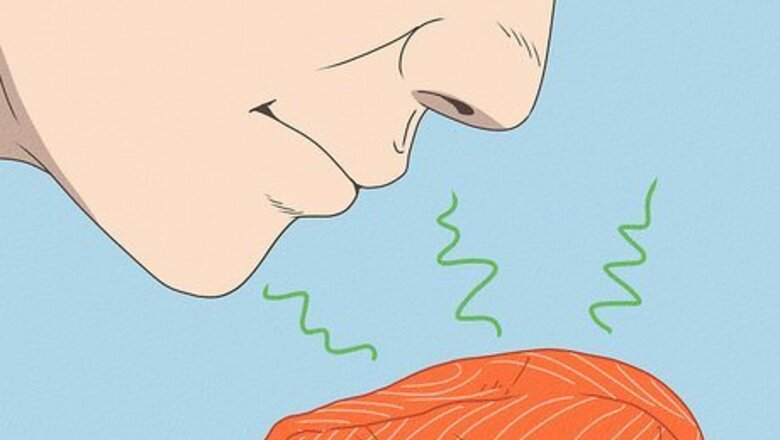
views
- Raw salmon has spoiled if it has a strong ammonia odor, white film on the meat, dull coloration, and mushy consistency.
- Leftover cooked salmon spoils after 2–3 days, or when it has a sour odor and slimy texture.
- Use salmon within 1–2 days of the “sell by” date on the packaging, or before the “best by” date.
Raw

Check for a strong, ammonia-like smell. Smell the raw salmon to see if it has a bad odor. Fresh salmon will have a very mild scent, but salmon that has gone bad gives off a pungent, fishy, or ammonia-like odor.
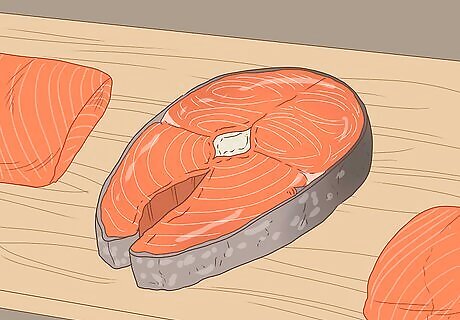
Look for a milky coating on the fish. Before cooking, inspect your salmon to make sure it doesn't have a translucent white film on its surface. If you see any type of slimy film developing on your salmon, toss it out.
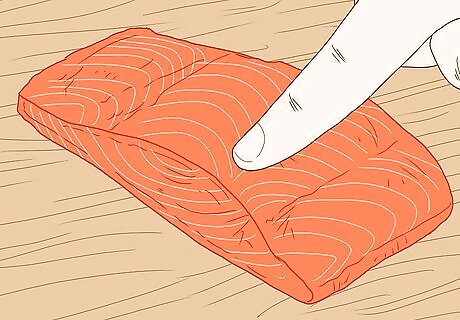
Poke the salmon to see if it breaks apart easily. Press your finger into the meat to check the raw salmon’s consistency. If the fish holds together and springs back to its original shape, then it’s okay to cook the meat. However, if the meat easily mushes or breaks apart when you handle it, throw it away.

Inspect the salmon’s eyes for cloudy discoloration. If you purchase salmon with the head still on, check the appearance of its eyes. Fresh salmon should have bright, clear eyes with a dark pupil in the middle. When the fish goes bad, the eyes appear discolored. The eyes on fresh salmon also appear to slightly bulge. If the eyes are sunken in, the fish has likely gone bad.

Check if the meat has a dull, pale color. Fresh salmon should have a bright pink or orange color when it’s still good to eat. If your salmon has a pale gray or pink color, then it’s probably best to throw it away. Fresh salmon also has fine white lines running through it, which indicate freshness. If you don’t see any white lines, your salmon has spoiled.

Look at the "best before" and "sell by" dates. If you are in doubt about the quality of your salmon, check the "best before" date indicated on the packaging. This date is not a definite prediction of when your fish will go bad, but it gives you a good idea of when it might spoil. Then, look at the "sell by" date on the packaging to see how much time has passed. As a general rule, refrigerated fresh salmon will keep for 1–2 days after its "sell by" date.
Cooked
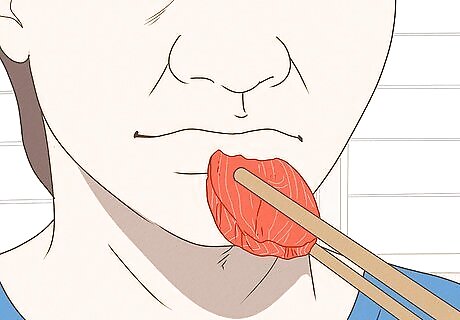
Check for a foul, sour odor. Give your salmon a sniff test to see if it has a foul fishy or rotten odor. If the salmon is still good, then it will have a mild, appetizing smell instead.

Feel if the salmon has a slimy texture. Touch the leftover cooked salmon to see if it has a slimy consistency. If your salmon has lost its thick, flaky texture, then it’s starting to go bad and could make you sick. Throw it away if it has any sliminess to it.
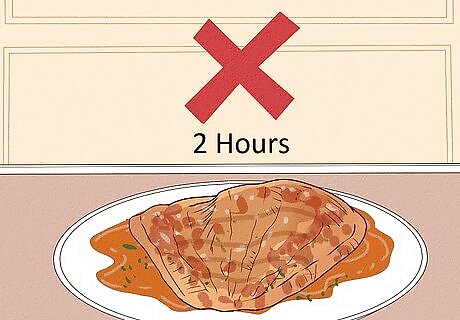
Avoid leaving cooked salmon at room temperature for over 2 hours. If cooked salmon sits out at room temperature, bacteria will begin to grow on the meat. Always take note of the time you cook salmon or the time that you order it at a restaurant, and the time you are able to put it into the fridge to make sure it’s still safe to eat.
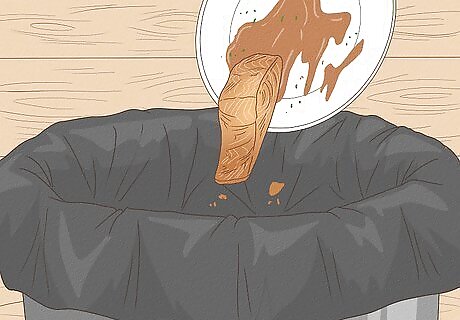
Throw away leftovers that are more than 2–3 days old. Regardless of whether the salmon appears to be spoiled, toss it out after 3 days. Since bacteria and mold start growing after a few days, eating the leftover salmon past that range could make your really sick.
Cooking Salmon Safely
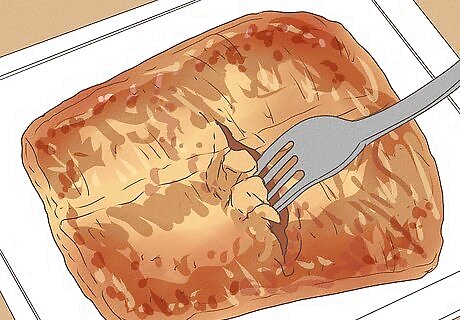
Use your fork to see if the fish flakes. Gently scrape through the salmon steak or fillet with your fork to see how the meat reacts. When you cook salmon properly, it will easily break into flakes when nudged. If your fish feels dense or rubbery, then it isn't cooked properly.

Look for opaque meat. Cut into your piece of salmon at its thickest point and inspect its color. Fully cooked fish will have a solid opaque color. If the salmon appears translucent, let it cook for longer.

Check that the fish is at least 145 °F (63 °C) in the middle. Stick a meat thermometer into the thickest part of the meat and let it sit for a minute to get an accurate reading. As long as the internal temperature is at or above 145 °F (63 °C), your salmon is cooked all the way through. If you eat salmon before it reaches the proper temperature, it could make you sick.














Comments
0 comment